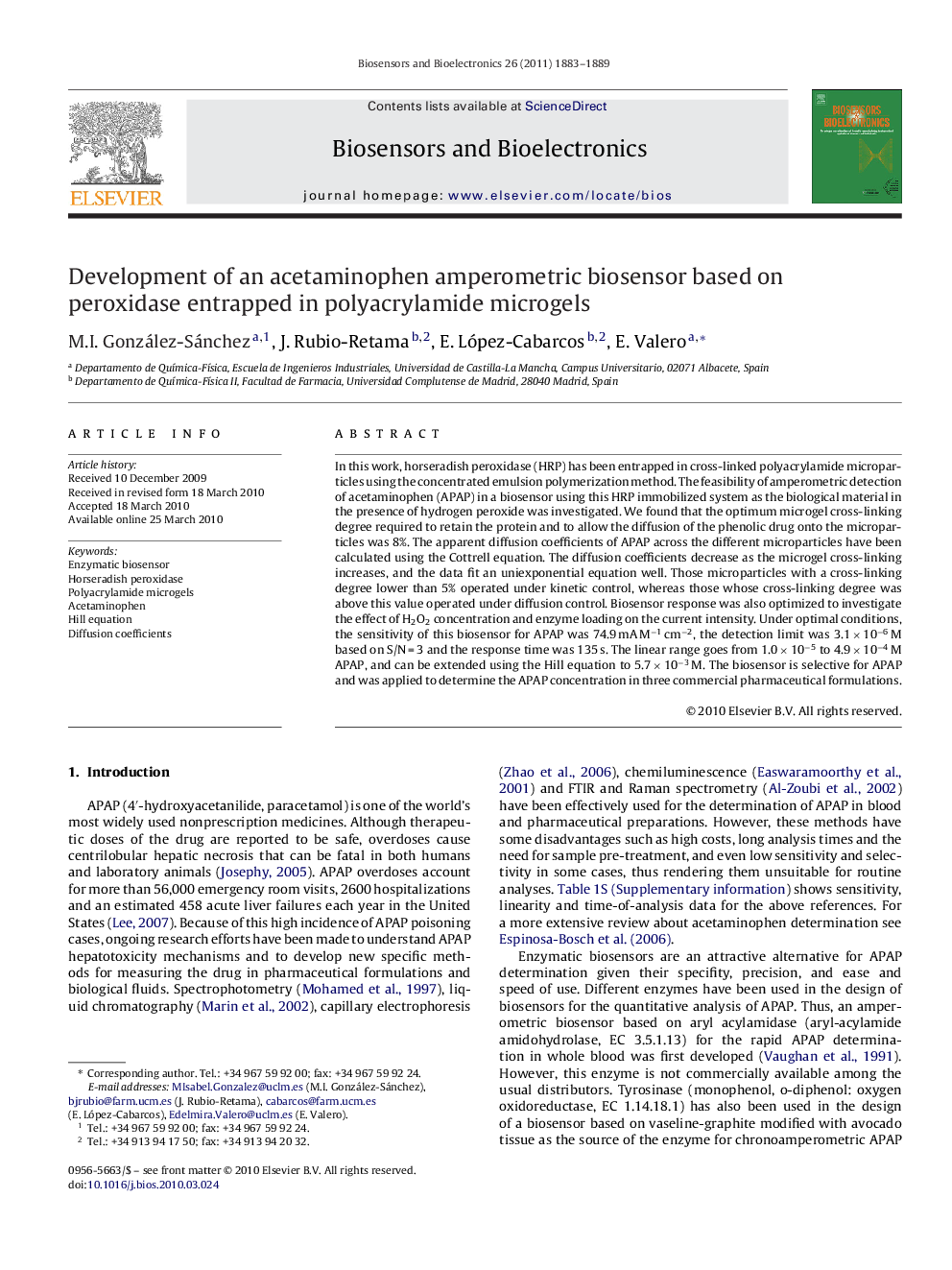| Article ID | Journal | Published Year | Pages | File Type |
|---|---|---|---|---|
| 868128 | Biosensors and Bioelectronics | 2011 | 7 Pages |
In this work, horseradish peroxidase (HRP) has been entrapped in cross-linked polyacrylamide microparticles using the concentrated emulsion polymerization method. The feasibility of amperometric detection of acetaminophen (APAP) in a biosensor using this HRP immobilized system as the biological material in the presence of hydrogen peroxide was investigated. We found that the optimum microgel cross-linking degree required to retain the protein and to allow the diffusion of the phenolic drug onto the microparticles was 8%. The apparent diffusion coefficients of APAP across the different microparticles have been calculated using the Cottrell equation. The diffusion coefficients decrease as the microgel cross-linking increases, and the data fit an uniexponential equation well. Those microparticles with a cross-linking degree lower than 5% operated under kinetic control, whereas those whose cross-linking degree was above this value operated under diffusion control. Biosensor response was also optimized to investigate the effect of H2O2 concentration and enzyme loading on the current intensity. Under optimal conditions, the sensitivity of this biosensor for APAP was 74.9 mA M−1 cm−2, the detection limit was 3.1 × 10−6 M based on S/N = 3 and the response time was 135 s. The linear range goes from 1.0 × 10−5 to 4.9 × 10−4 M APAP, and can be extended using the Hill equation to 5.7 × 10−3 M. The biosensor is selective for APAP and was applied to determine the APAP concentration in three commercial pharmaceutical formulations.
